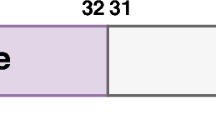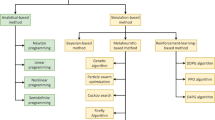Abstract
Stupendous and inevitable applications of dynamic CMOS circuits add thrust to its optimization to high-end performance. Dynamic logic circuits are very efficient in terms of speed, but these circuits suffer from high power consumption and noise. A high-speed circuit with low power consumption and high robustness is required with recent advancements. It has become necessary to find a circuit design technique that can utilize the features of dynamic logic and provide ways to overcome its drawbacks. The proposed technique is named TSPC-HNTL (True Single Phase Clock technique for High speed, Noise Tolerance, and Low Power). In this approach, the threshold voltage of specifically selected two transistors in the pull-down network is regulated meticulously through the proposed threshold voltage tuning circuit. The bias tuner circuit provides forward body biasing during the active mode of operation to achieve high-speed operation and reverse body biasing during the standby mode of operation to achieve low power consumption and noise. Further, a transistor is placed in a pull-up network to provide a stacking effect. This stacking transistor is connected with a gate tied to the drain terminal. The proposed design technique is thoroughly studied and analyzed for all performance parameters such as power delay product, leakage power consumption, process corner analysis, unity noise gain, ground/supply bounce noise, sizing, etc. An appreciable reduction in power delay product is achieved with the proposed design technique. The proposed design is also having higher unity noise gain and reduced voltage bouncing noise as compared to other design techniques. It is found to be robust with temperature, voltage, sizing, and process corner variations. It is found that the proposed TSPC-HNTL dynamic circuit design technique is a better performer in-class for every parameter of performance evaluation.












Similar content being viewed by others
Data availability
Data sharing is not applicable to this article as no datasets were generated or analyzed during the current study.
References
Meimand, H. M., & Roy, K. (2004). Diode-footed domino: A leakage-tolerant high fan-in dynamic circuit design style. IEEE Transactions on Circuits & Systems, 51(3), 495–503.
Larsson, P., & Svenson, C. (1994). Impact of clock slope on true single-phase clocked (TSPC) CMOS circuit. IEEE Journal of solid-State Circuits, 29(6), 723–726.
Radhakrishnan, D. (2001). Low-voltage low-power CMOS full adder. IEE Proceeding of Circuits Devices Systems, 148(1), 19–24.
Krambeck, R. H., Charles, M. L., & Law, H.-F.S. (1982). High-speed compact circuits with CMOS. IEEE Journal of Solid-State Circuits, 17(3), 614–619.
Birla, S., Mahanti, S., & Singh, N. (2020). Leakage reduction technique for nano-scaled devices. Circuit World, 47, 97–104.
Ji-ren, Y., Karlsson, I., & Svenson, C. (1987). A true single-phase-clock dynamic CMOS circuit technique. IEEE Journal of Solid-State Circuits SC, 22, 899–901.
Karlsson, I. (1988). True single-phase clock dynamic CMOS circuit technique. IEEE International Symposium on, pp. 475–478. IEEE.
Dobberpuhl, D. W., Witek, R. T., Allmon, R., Anglin, R., Bertucci, D., Britton, S., Chao, L., et al. (1992). A 200-MHz 64-bit dual- issue CMOS microprocessor. Digital Technical Journal, 4(4), 1555–1567.
Corsonello, P., Perri, S., & Cocorullo, G. (2000). a Performance comparison between static and dynamic CMOS logic implementations of a pipelined square-rooting circuit. IEE Proceeding of Circuits Devices Systems, 147(6), 347–355.
Zeng, Y., Li, Y., Zhang, X., & Tan, H. Z. (2017). Ultra-low-power, high PSRR CMOS voltage reference with negative feedback. IET Circuits Devices Systems, 11(6), 535–542.
Mendoza-Hernandez, F., Linares-Aranda, M., & Champac, V. (2006). Noise-tolerance improvement in dynamic CMOS logic circuits. EE Proceedings of Circuits Devices Systems. https://doi.org/10.1049/IP-CDS:20050292
Mendoza-Hernandez, F., & Linares-Aranda, M. (2007). A noise-tolerant technique for submicron dynamic digital circuits. Revista Mexicana de fascia, 53(1), 72–82.
Frustaci, F., Corsonello, P., Perri, S., & Cocorullo, G. (2008). High-performance noise-tolerant circuit techniques for CMOS dynamic logic. IET Circuits, Devices & Systems, 2(6), 537–548.
Wey, I.-C., et al. (2015). Noise-tolerant dynamic CMOS circuits design by using true single-phase clock latching technique. International Journal of Circuit Theory and Applications. https://doi.org/10.1002/cta.1976
Ahn, S.-Y., & Cho, K. (2014). Small-swing domino logic based on twist-connected transistors. Electronics letters, 50(15), 1054–1056.
Xue, H., & Ren, S. (2017). Low power-delay-product dynamic CMOS circuit design techniques. Electronics Letters, 53(5), 302–304.
Razavi, B. (2016). TSPC logic-A circuit for all seasons. Magazine, 8(4), 10–13.
Gu, R. X., & Elmasry, M. I. (1999). Power dissipation analysis and optimization for deep submicron CMOS digital circuits. IEEE Journal of Solid-State Circuits, 31, 707–713.
Lu, Y., Bhargava, B., Wang, W., Zhong, Y., & Wu, X. (2003). Secure wireless network with movable base stations. IEICE Transaction on Communications, E-86B(10), 2922–2930.
Srivastava, A., & Zhang, C. (2008). An adaptive body-bias generator for low voltage CMOS VLSI circuits. International Journal of Distributed Sensor Networks, 4(2), 213–222.
Author information
Authors and Affiliations
Corresponding author
Additional information
Publisher's Note
Springer Nature remains neutral with regard to jurisdictional claims in published maps and institutional affiliations.
Rights and permissions
About this article
Cite this article
Verma, P., Sharma, A.K., Pandey, V.S. et al. TSPC-HNTL: True Single Phase Clock technique for High speed, Noise Tolerance, and Low power. Analog Integr Circ Sig Process 112, 333–345 (2022). https://doi.org/10.1007/s10470-022-02047-6
Received:
Revised:
Accepted:
Published:
Issue Date:
DOI: https://doi.org/10.1007/s10470-022-02047-6




